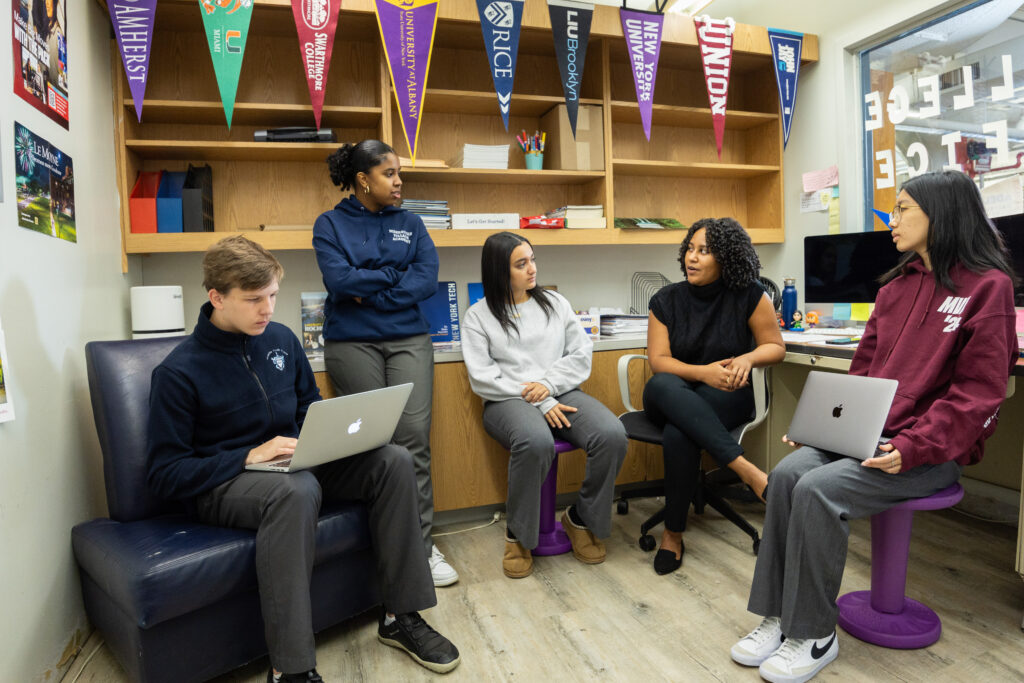
College Advising Corps recruits graduating college seniors to serve as full-time college advisers in high-need high schools nationwide.
Credit: Courtesy of College Advising Corps
Every June, California celebrates a powerful milestone: high school graduation. Students in caps and gowns cross the stage, cheered on by families and communities who see in them hope, pride and possibility.
However, for too many students, especially those from under-resourced schools, the question of what comes next is murky. Some walk off the stage with no clear plan. Others find themselves in programs that don’t align with their goals — or worse, in ones that exploit their hopes without delivering on promised outcomes.
Only 47% of Gen Z say they had enough information to make decisions about life after high school, according to research from Jobs for the Future. That means more than half of today’s graduates are stepping into adulthood without a clear understanding of their options. This isn’t just a failure of information — it’s a failure of connection and support.
And it’s not because young people lack talent or ambition. Too often, we as adults — educators, parents, counselors, mentors and community members — fail to slow down and listen. We’re quick to ask, “What’s next?” but not “What do you want for your future?” or “What support do you need to get there?”
If we want young people to thrive after high school, we need to offer more than a diploma. We need to offer real guidance, grounded in partnership and trust.
Effective advising doesn’t just happen in a counselor’s office. It can take place at the dinner table, on a lunch break, or in a conversation with a trusted adult. Whether you’re a parent talking to your child, a teacher checking in with a student, or a colleague offering advice to a teen in your life, we can all be advisers. And guidance starts with questions, not answers: What are you interested in? What kind of life do you want? What makes you excited about the future? These conversations create space for young people to reflect and be heard.
As adults, we often worry that young people spend too much time on screens and not enough on building real connections. But we’re just as guilty. We answer questions with links, send them to websites, or expect an app to do the listening for us. Meanwhile, we miss chances to engage meaningfully. If we truly want to connect, we have to step away from our own screens, carve out time, and show up with our full attention.
That might mean grabbing coffee, going for a walk, or just asking how a young person is really doing. A meaningful path forward doesn’t start with a form — it starts with a conversation.
We answer questions with links, send them to websites, or expect an app to do the listening for us. Meanwhile, we miss chances to engage meaningfully.
From there, we can help them explore their options — whether that’s a four-year university, community college, trade certification or starting work with a plan for what comes next. Don’t stop at encouragement. Help them complete financial aid forms. Review applications. Connect them with someone in the field they’re curious about. Drive them to a college tour or career fair. Small, consistent gestures often make the biggest difference. You don’t have to have all the answers — you just need to be present and willing to help.
California has made important strides to support students, including new investments in school-based counseling and digital tools for academic and mental health services. These efforts are necessary. But they’re not enough.
The student-to-counselor ratio in California is still more than double the national recommendation. In too many schools, one counselor handles everything from schedules to crisis response to postsecondary advising. That isn’t sustainable if we want students to graduate with a supported path forward.
And while we believe deeply in the power of higher education — a bachelor’s degree remains one of the strongest levers for economic mobility — it’s not the only route to a meaningful life. Students shouldn’t be pressured into one definition of success. They need trusted adults who will walk alongside them, help them weigh options and support them in choosing paths that reflect their goals and strengths.
Before I led a college access organization, I worked in human resources. I hired people with all kinds of backgrounds — elite university grads, community college starters, GED holders, certified technicians. I learned that talent, adaptability and drive don’t always come in the packaging we expect. That experience shaped how I lead today: with a commitment to helping students recognize their potential, no matter their starting point, and supporting them in building futures that make sense for them.
A high school diploma is worth celebrating. But it should come with more than applause. It should come with a map — built in partnership with students and grounded in the belief that every young person deserves a future they can see, shape and own.
Let’s help them build it.
•••
Ekaterina Struett is the CEO of College Advising Corps, a national nonprofit that has helped over 1 million students from low-income, first-generation and underrepresented backgrounds navigate their path to higher education and career success.
The opinions expressed in this commentary represent those of the author. EdSource welcomes commentaries representing diverse points of view. If you would like to submit a commentary, please review our commentary guidelines and contact us.

دیدگاهتان را بنویسید